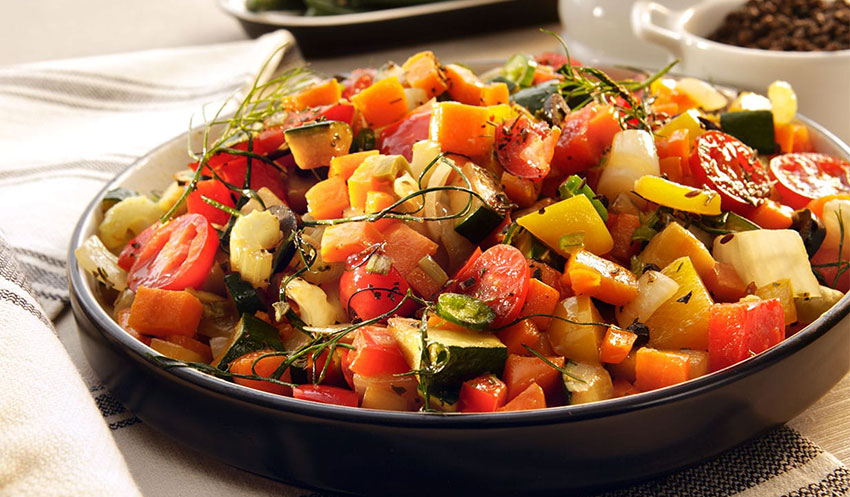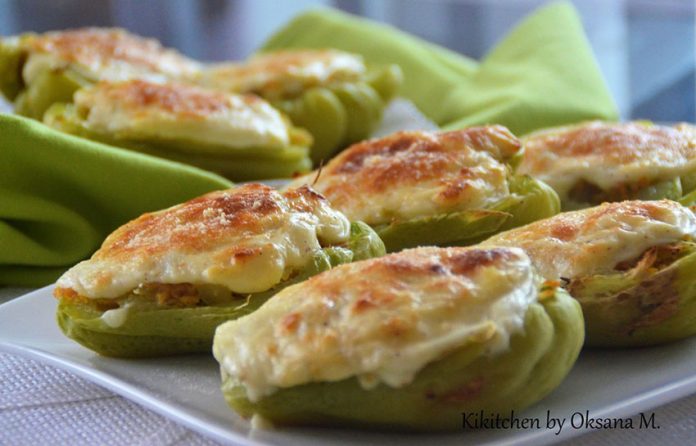I hadn’t heard of or even seen a chayote until I moved to Mexico. Had you? Perhaps if you’re from the southern part of the United States – where they’re called “mirlitons” and are a favorite ingredient in Creole and Louisiana cooking – you might have.
The man I call my greengrocer at the stand I usually go to in the local mercado said they were like squash. OK, I thought: steamed with butter, add to soups, etc.
Little did I know this odd-looking vegetable is actually a fruit – as is a tomato – although it’s usually cooked like a vegetable. Curious, I cut one open and tasted it raw. Crispy, juicy and slightly sweet, it reminded me of an apple or even jicama. Who knew?! Not me. This column is educational for the writer as well as the reader!
Known by many names around the world — vegetable pears, chocho or choko, christophene, sayote, the aforementioned mirliton and others – chayote is a Spanish derivative of the indigenous Mexican Náhuatl word chayohtli. Maybe that explains why the fruit is so common here in Mexico, although the fruit and its tender shoots and leaves are also used extensively in Thai, Chinese and Vietnamese cooking.
Chayotes are a member of the squash family, cousins to cucumbers, and grow on long vines with the pale green bumpy fruits hanging in the same way. They’re an excellent source of vitamin C and antioxidants – which supposedly slows the aging process – and a good source of fiber too.

Some varieties have small, soft spines, and you might find them individually wrapped in a protective foam covering. Supposedly you can eat the peel of younger fruits but, well, how can you tell their age? Beats me. Cut and taste, I guess – the darker green skin will either be easy to chew or not. Inside is a largish flat pit, near the bottom, that should be discarded. Once the chayote is cut, you’ll feel a sticky liquid that’s released from under the skin. Just rinse this off and you’re good to go.
Because the flavor is so mild when cooked, chayote are a versatile ingredient to play around with. Use them like summer squash, stuffed with all sorts of fillings (find some ideas below) or raw in salads, where their sweet crunchiness is a lovely addition.
Shrimp & Crab Stuffed Chayote
This can also be made as a casserole by cubing the steamed chayote and dividing the bread crumbs to put half on top with a little more melted butter, then baking for about 30 minutes.
- 8 chayote
- 2 Tbsp. butter
- 1 small onion, chopped
- ½ green bell pepper
- 2 green onions, sliced
- 1 stalk of celery, chopped
- 2 garlic cloves, minced
- 1 Tbsp. dried parsley
- 1 tsp. thyme
- ½ tsp. Cajun seasoning, if available, or crushed red chili
- 1 bay leaf
- Salt & pepper to taste
- 1 lb. cooked shrimp, chopped coarse
- ½ cup bread crumbs
- ½ lb. crabmeat
- ¼ to ½ cup of chicken broth, only if needed
- 2 Tbsp. olive oil or melted butter
- Optional: mix 1 cup grated cheese of your choice in mixture.
Preheat oven to 350 F. Slice chayote in half lengthwise. Steam flesh side down for 20 minutes; set aside. Once cool, use a spoon to scoop out most of the pulp, leaving about ¼ inch of shell. Save the pulp and discard the seeds.
In a large skillet, melt butter and sauté onion, bell pepper, green onion and celery until tender. Add garlic and sauté an additional minute. Stir in the squash pulp, parsley, thyme, Cajun seasoning and bay leaf; simmer on medium for about 5 minutes. Season with salt and pepper. Add shrimp and bread crumbs, stir to mix well. Add the crabmeat and cheese if using, and gently blend. Add chicken broth only if mixture is too dry and needs a bit of moisture; otherwise, leave it out.
Oil a cookie sheet or lasagna pan. Mound mixture generously into the chayote shells and drizzle with olive oil or melted butter. Bake uncovered for 20-25 minutes, or until golden brown. Makes 8 servings.
Chayote Salad
- 2 Tbsp. fresh lime juice
- 1 tsp. raw honey
- 1 tsp. olive oil
- Pinch kosher salt
- 5 radishes, thinly sliced
- 1 small chayote, pitted & julienned
- ½ avocado, pitted, peeled & chopped
- 1 Tbsp. finely diced jalapeño, seeds removed
- ¼ cup finely chopped fresh cilantro
- Optional: ¼ tsp ground cayenne
In large bowl, whisk together lime juice, honey, oil, cayenne and salt. Add radishes, chayote, avocado, jalapeño and cilantro; toss gently. Serve immediately or refrigerate, covered, for up to 2 days.

Nancy’s Chayote Ratatouille
- ¼ cup olive oil
- 2 medium chayotes, peeled and cut into batons or cubed
- 1 eggplant, peeled and cut into ½ inch cubes
- 1 green or yellow bell pepper, cut into batons or chopped
- 1 medium onion, cut into batons or chopped
- 2 ½ cups chopped fresh tomatoes
- 1 small can or box of tomato puree
- 2 cloves garlic, minced
- 1 tsp. dried oregano
- 3 Tbsp. minced fresh parsley
- 2-4 fresh basil leaves, minced or ½ tsp. dried
- Salt & pepper to taste
- 1 cup grated mozzarella or Chihuahua cheese
Heat oil in a large saucepan. Add oregano, onion and garlic and sauté for a few minutes. Add remaining veggies, tomatoes and tomato puree, fresh herbs and stir to mix. Cover and simmer on low heat 10-15 minutes. Add salt and pepper. Pour into large baking dish, top with cheese and either broil under heat or bake in a moderate oven until cheese melts. Serve with rice or pasta. Makes about 4 servings.
Janet Blaser of Mazatlán, Sinaloa, has been a writer, editor and storyteller her entire life, and feels fortunate to write about great food, amazing places, fascinating people and unique events. Her work has appeared in numerous travel and expat publications as well as newspapers and magazines. Her first book, Why We Left: An Anthology of American Women Expats, is available on Amazon. Contact Janet or read her blog at whyweleftamerica.com.
